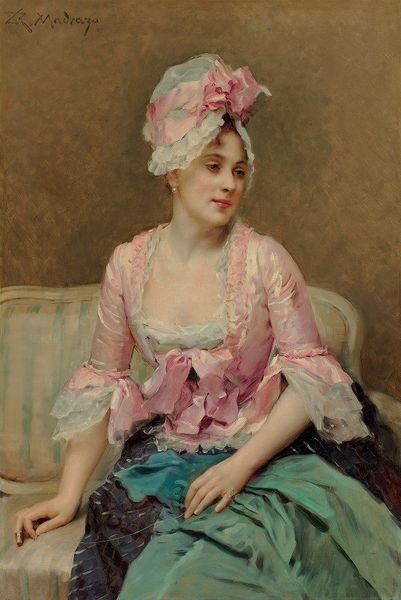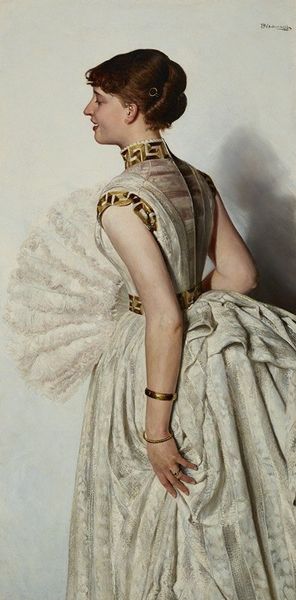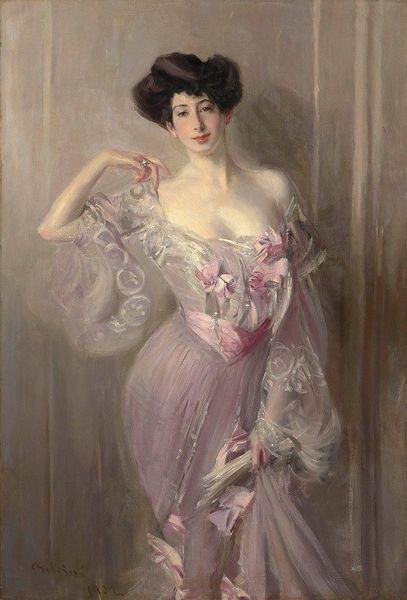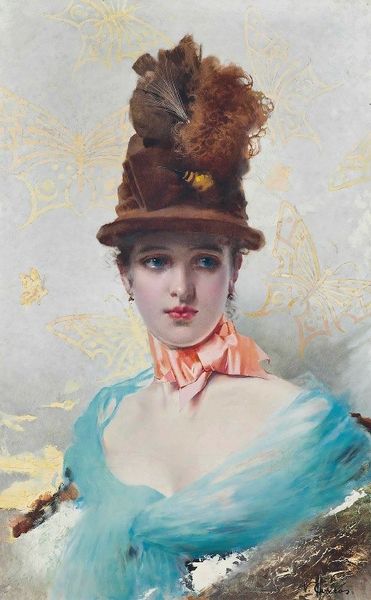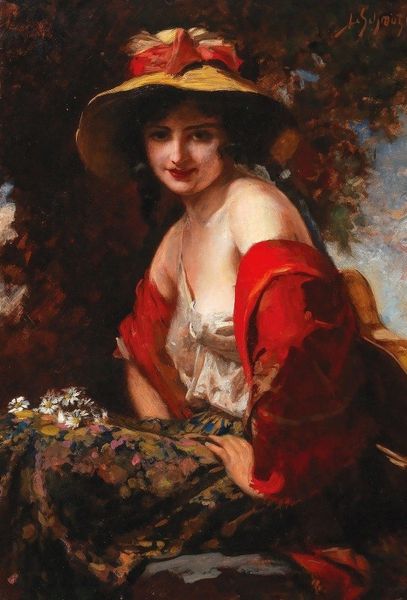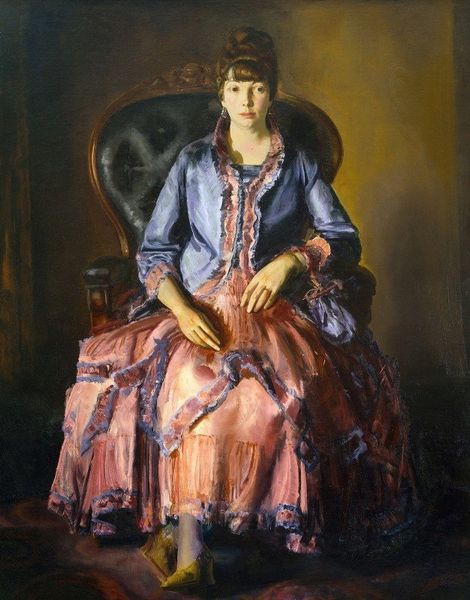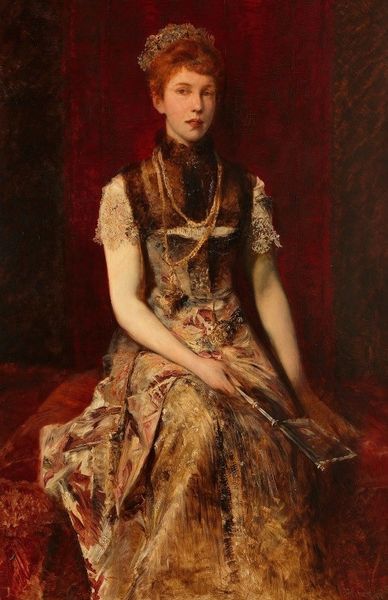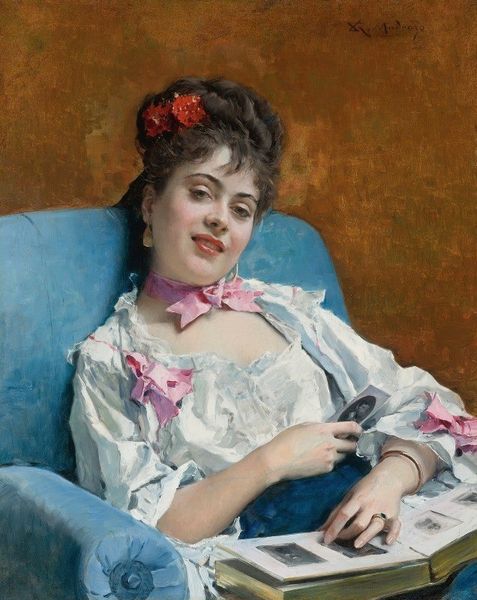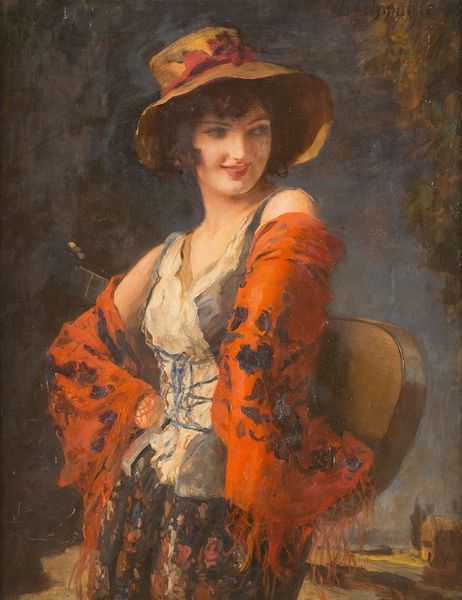
painting, oil-paint
#
portrait
#
figurative
#
painting
#
oil-paint
#
figuration
#
intimism
#
romanticism
#
genre-painting
#
academic-art
#
realism
Copyright: Public Domain: Artvee
Władysław Czachórski painted "Jeune belle" using oil, although its exact date remains unknown. This portrait encapsulates the late 19th-century fascination with beauty and elegance, reflecting the era's social values and artistic trends. The image creates meaning through its depiction of a young woman adorned in fashionable attire, complete with a feathered hat and elaborate gown. The soft color palette and delicate brushwork enhance the subject's idealized beauty, while the pose and expression evoke a sense of refinement. Made in Poland, this painting likely appealed to the tastes of the upper class, who valued portraiture as a symbol of status and cultural sophistication. To understand "Jeune belle" more fully, scholars consult historical fashion plates, social commentaries, and biographical information about the artist and his patrons. By examining these resources, we can better appreciate the painting's cultural significance and its role in shaping perceptions of beauty and identity during Czachórski's time. Art is deeply rooted in social and institutional contexts.
Comments
No comments
Be the first to comment and join the conversation on the ultimate creative platform.
